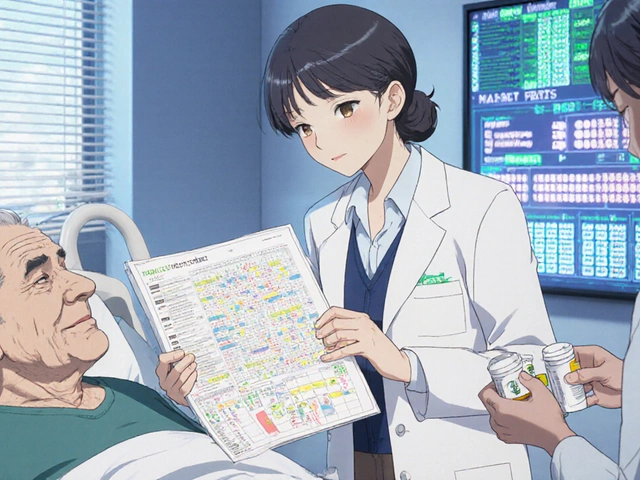Palliative Care: Practical Guides and Resources
When a serious illness changes daily life, many people look for ways to stay comfortable and keep dignity. That’s where palliative care steps in – it isn’t just for end‑of‑life moments, it’s about easing pain, breathlessness, anxiety, and other tough symptoms while supporting families.
On this page you’ll find quick, useful articles that cover the most common concerns in palliative settings. Whether you’re caring for a loved one at home or need info for a hospital stay, the guides below give you clear steps you can act on right away.
What Is Palliative Care?
Palliative care focuses on relief of physical, emotional, and spiritual suffering caused by serious illness. It works alongside curative treatments, so you don’t have to choose between fighting disease and staying comfortable. A team of doctors, nurses, pharmacists and counselors builds a plan that matches your goals – no jargon, just real solutions.
Key benefits include better pain control, fewer hospital readmissions, and clearer communication with health‑care providers. Think of it as a safety net that catches the side‑effects of disease and its treatments, letting you or your caregiver focus on quality of life.
Find Helpful Articles for Symptom Relief
Below are some of our most popular reads that tie directly into palliative care topics:
Pyridoxine (Vitamin B6) for Arthritis – Learn how this vitamin can ease joint pain without heavy drugs. Includes dosage tips and safety notes.
Loperamide (Imodium) Overdose – Recognize warning signs of misuse, get immediate steps to take, and understand when emergency care is needed.
Skelaxin (Metaxalone) for Muscle Pain – A plain‑language guide on when this muscle relaxant is appropriate, its side effects, and how it fits into a broader pain‑management plan.
Flomax for BPH Relief – While not a classic palliative drug, managing urinary symptoms can dramatically improve comfort for older adults in hospice care.
Blood Clotting Disorders – Knowing the signs of bleeding problems helps you avoid dangerous complications that can arise in fragile patients.
Each article is written in everyday language, so you can skim the key points, note down dosages, and discuss them confidently with your health team.
Beyond these reads, you’ll also find resources on buying medicines safely online, navigating cross‑border prescriptions, and using natural supplements like black seed oil or berberine for extra support.
Remember, palliative care isn’t a one‑size‑fits‑all plan. It evolves as needs change, and the best outcomes come from open conversation with doctors, pharmacists, and family members. Use the articles here as conversation starters – ask your clinician if a vitamin, a low‑dose pain med, or a specific coping strategy fits your situation.
Finally, if you have questions that aren’t covered, our contact page is ready for you. We’re here to help you find the right information quickly, so you can focus on what matters most: comfort, connection, and living well, no matter the diagnosis.

The Role of Palliative Care in Chronic Heart Failure Management
- By : Archer Hamilton
- Date : Sep 4 2023
As a health blogger, I feel compelled to discuss the integral role of palliative care in managing individuals with chronic heart failure. This post delves into the complexities of chronic heart disease and highlights palliative care as an effective method in not only mitigating physical symptoms but also offering psychological support. We're going to break down the importance of individualistic care in patient outcomes and analyze the role of physicians and caregivers in this process. Join me in exploring this crucial aspect of heart disease management.





